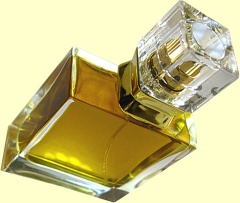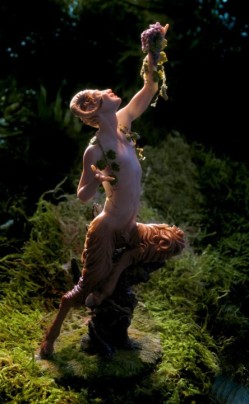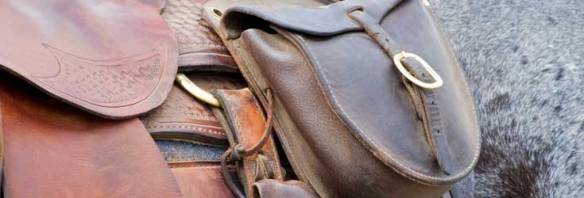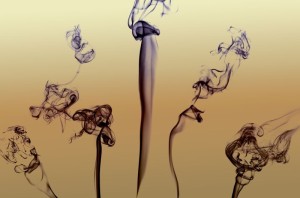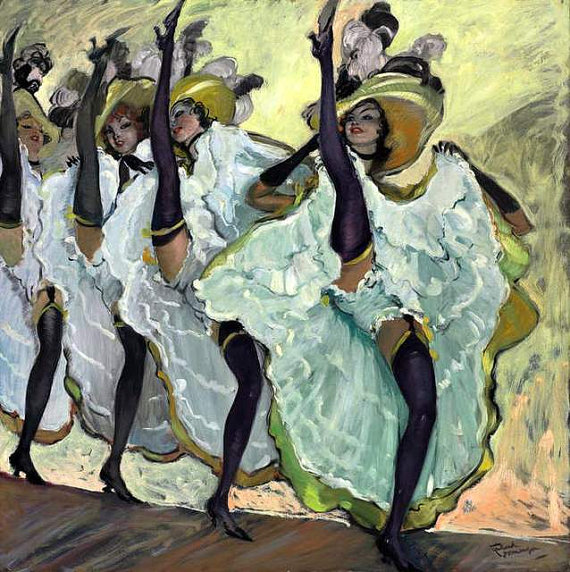
Source: hqdesktop.net
Have you ever tried a perfume, took a sniff, then almost fell over yourself to spray on more? That’s what happened to me with Milano Caffé, which led to an actual “ohhh” out loud, then a frenzied application all over. It is a visual plethora of dark colours from the blackness of bitter expresso and licorice, to the mahogany of deep woods, the green-blackness of patchouli and smoky vetiver, and the darkness of black chocolate. Subtle hints of goldenness flit about from amber and vanilla, but on my skin, they are mere fireflies in the dark forest.

Dominque Dubrana via the NYT. Photo by Domingo Milella.
Milano Caffé is the creation of the perfumer, Dominique Dubrana, who also goes by the name “AbdesSalaam Attar.” His perfume house, La Via del Profumo, focuses on all-natural fragrances, many of which have a Middle Eastern flair or subtext. I’m utterly fascinated by Mr. Dubrana, a man who some consider to be a genius and magician and who was the focus of a fantastic, gushing article in The New York Times entitled “Smellbound.”
In 2013, he debuted an “Italian Series” of fragrances which sought to pay tribute to his adopted homeland. Milano Caffé (which I’ll just write without the accent as “Milano Caffe” for ease and speed) is the first of the line, and is classified on Fragrantica as an “oriental vanilla.” Personally, I would categorize it as a Woody Oriental. On his Profumo website, AbdesSalaam Attar describes Milano Caffe as follows:
This first fragrance, named for Milan, is centered on the omnipresent and most characteristic smell of the city, the aroma of coffee. It pervades the streets and workplaces; it is part of every event and encounter, professional or leisurely; and is present in every social occasion.
I have blended coffee with chocolate because that is the Milanese way: the residents of that marvelous city add Cacao powder to cappuccinos, and place a single square piece of chocolate next to your cup of coffee.
The combination of coffee and chocolate is your introduction to the city of Milan, but it is merely the start. The original blast of coffee- chocolate melts quickly into woody-spicy notes. The body of ‘Milano cafè’ is an elegant male fragrance worthy of the sophisticated fashion that characterizes the city: Warm, dry, woody, sober and at the same time rich, with a determined, confident character.
A subdued spicy accord alludes to the multi-ethnic aspect of the city, as manifest in the Somali and Arab restaurants that have flourished there in recent years.
Milano caffè is not your usual masculine, composed of trite notes to appeal to a mass audience. It is, instead, a new and unexpected accord that will appeal to people who make trends, not those who follow them.

Milano Caffe via The Perfume Shrine.
Fragrantica provides the succinct list of notes:
coffee, cappuccino, chocolate, iris, woody notes, spicy notes, opoponax [sweet myrrh], tonka bean and amber.
There are a lot of unspecified, uncategorized notes on that list, and on my skin, they dominate. What appears on my skin, after quite a few tests, would be something more like this:
Patchouli, vetiver, cedar, expresso coffee, dark chocolate, cocoa powder, licorice, sweet myrrh, iris, something phenolic and tarry that might be birch, then tonka and amber. Possibly also: coriander.
I meant what I said at the beginning about my initial reaction to Milano Caffe, but it is significant for another reason as well. In my eagerness to spray on more, I applied Milano Caffe to my second arm, instead of just to my main testing arm which is the left one. I noticed an immediate, and quite substantial, difference in smell. Perhaps it is a pH issue, or perhaps my skin is even stranger than I suspected, but there was a very different version of Milano Caffe on my right arm than on my left one.
As a result, I’ve tested the fragrance three times in all, on both arms simultaneously. The same differences occurred each time during the first few hours. The perfume’s drydown is largely the same, but one arm gives a significantly darker, drier, woodier, smokier version of Milano Caffe. The other (my main testing left arm) reflects more vanilla, amber, warmth, and sweetness. One version is slightly more unisex, the other is hardcore masculine, though I think the fragrance skews very masculine in general. So, I’ll give you both versions of how Milano Caffe appeared on me.
VERSION 1:

Source: Sodahead.com
Milano Caffe opens on my skin with an intense darkness, along with earthy, woody and smoky notes. There is smoked vetiver, something that resembles smoky Lapsong Souchang tea, cedar, earthy but green patchouli, sweet green grass, and spices. There is also a whisper of sweet muskiness that smells natural, as if you’re smelling it on a flower in nature or from the earth. It’s iris, but done in a way that may be the very first time I’ve ever loved the note. It’s delicately floral, but also infused with woody and smoked tonalities. A minute later, the bitterest of expresso coffees floods in to add a truly original, intense touch to the whole combination.

Patchouli. Source: womenworld.com.ua
There is zero doubt in this patch head’s opinion that Milano Caffe contains a lot of patchouli, and I love every bit of it. It’s not the revolting modern version with its purple, syrupy fruit-chouli characteristics, but the real, hardcore, original stuff. In fact, the patchouli manifests itself from the top of the plant to the bottom: there is the green, pungent, medicinal edge of the leaves, but also the sweet, wet, damp earthiness of the soil around its base. At first, it is a subtle touch, but it takes maybe 2 minutes for the patchouli to become one of the main players on my skin, injecting both a medicinal greenness and a peppermint note to the proceedings.
This is no spicy, ambered, brown-red patchouli, but a very green one. Yet, despite that, it is as chewy and dense as the common labdanum-infused, boozy patchoulis on the market. The black-green kind in Milano Caffe also sometimes reflects a distinct boozy cognac touch that appeared in a few of my tests in the opening minutes, but that aspect is incredibly brief. As a whole, the patchouli in Milano Caffe in all tests and on both arms spans the green end of the spectrum from metholated and medicinal, to peppermint.

Licorice. Source: Dylanscandybar.com
Other notes are perfectly blended within. There is a definite, very strong element of licorice that appears every time I’ve tested Milano Caffe. It’s black and very chewy in feel. It counters the floral element that, in some tests, was quite noticeable in the opening minutes, but very muted and muffled in others. The same thing applies to the sweet myrrh which adds a nutty quality, but also a quiet, subdued touch of smokiness. In some tests, it was initially quite noticeable, but, in most of them, it was the tiniest of notes that barely registers.

Black chocolate via bioshieldinc.com
Much more significant, however, is the chocolate. At first, it’s just a whisper that feels like unsweetened, black chocolate that lurks on the sidelines or under the expresso. About 20 minutes in, it grows stronger, thoroughly infusing the expresso and the patchouli’s peppermint, until the three notes are essentially one. At the same time, there is also a feeling of dusty, semi-sweetened cocoa powder sprinkled on everything.
Lurking far below in the base is something that feels distinctly phenolic and tarry, with a very leathered, smoky feel. It’s not like the birch tar in some leather fragrances, because it’s hardly animalic, fecal or raw, but there is something of birch’s smokiness about it. It’s subtle, more akin to tiny tendrils blown from a campfire in the distance, but there is definitely something deeply dark, leathered, and smoky in Milano Caffé’s base. Milan and Italy are as famous for their leathers as for their expresso, so it wouldn’t be surprising if an olfactory ode to the city gave a nod to that element.

Source: brookstone.com
The overall combination and effect drove me wild. Coffee’d patchouli with black chocolate, licorice, smokiness, and dark woods. Genius, pure genius. Why has no-one ever done that before? How come no-one has ever thought to mix the darkness of patchouli and its peppermint qualities with something like bitter expresso and chocolate? I haven’t had such an instant, immediate reaction to a fragrance’s opening since my Paris trip, and the perfumes I bought or singled out for samples to test on my return. I wrote in my notes, “so happy, I could scream.” You have to be a patchouli addict to understand and relate to that, because I don’t think Milano Caffe’s dark, bitter, smoky, woody opening will be for everyone. Most definitely not, and especially not for most women, in my opinion. But I loved it.
Twenty minutes in, Milano Caffe is a seamless, rich, decadent, endlessly dark blend of notes. There is woody darkness, smoky vetiver, green patchouli, bitter black expresso, iris, smoke, licorice, black chocolate, and damp, sweet earth. Only the subtlest touch of warm amber lurks about, the iris is fading away, and both the sweet myrrh and cedar feel indistinct. In the background, there is an amorphous, indistinct touch of spiciness. I keep wondering if Milano Caffe has coriander in it because I occasionally pick up on the oddest nuance of something lemony, but dry. The whole bouquet feels incredibly dense and chewy, but Milano Caffe’s projection drops from its initial intensity to something that is only moderate at this point.
From a distance, the main bouquet is of bitter coffee infused with patchouli peppermint, licorice, chocolate and green, medicinal pungency. I’m fascinated by the interplay of notes, especially the ones you can smell if you go in close, because the notes sound like such a crazy combination. And, yet, they work so well here. The subtle ambered heart helps to counter the forcefulness of the elements, and to provide some warmth, but it never verges on sweetness.
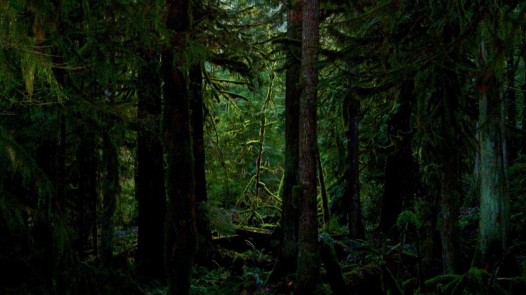
Source: chaoswallpapers.com
As a whole, on my right arm which I don’t usually use for testing, Milano Caffe is a very dry, woody, greenly dark fragrance that is bitter-sweet at best. In truth, I would have preferred more of a counter-balance to that aspect of things, because my skin takes the base notes and runs with them to quite an unrelieved extreme. About 1.75 hours in, Milano Caffe is primarily a peppermint patchouli-vetiver combination. I wish it weren’t quite so dominant, as it has far overshadowed the coffee and other elements. While my skin normally amplifies sweetness and amber, it hasn’t done so here. I have to admit, this vetiver-peppermint stage was a little disappointing for me, not only because it lacked the complexity of the opening, but also because its darkness was a bit too constant for my personal tastes.

Peat bricks in an outdoor fire. Source: freeirishphotos.com
In fact, in one of my tests on this arm, Milano Caffe turned even darker. There was much more smoky woodiness, from the vetiver, the cedar, and the mysterious tarry element. The latter definitely evoked an outdoor bonfire in the way that birch tar or cade can often do, while the vetiver takes on a peaty tonality. The overall combination repeatedly called to mind Jovoy‘s Private Label, another fragrance with blackness, peppermint, woods and smokiness. There are big differences, however, as Private Label took all those elements to an extreme, while Milano Caffe is significantly better modulated and balanced. Plus, it has coffee, licorice and dark chocolate, while the Jovoy fragrance is centered on hardcore smoked vetiver and birch tar smoke with leather.
Perhaps it’s merely an odd idiosyncrasy of the skin on my non-testing arm, but Milano Caffe flattens into a patchouli peppermint with dark woods scent for the rest of its duration. I wish it hadn’t, as it was too much of the same thing for me, and the necessary counterbalance of ambered warmth was far too inconsequential on my skin to have much effect. Milano Caffe turns into a skin scent at the end of the third hour, and, in its final moments, Milano Caffe is merely dry woodiness with a vague suggestion of something patchouli about it. All in all, it lasted about 10.75 hours with 3 small sprays. Thankfully, Milano Caffe is consistently better balanced on my other arm.
VERSION 2 – MAIN TESTING ARM:

Source: 123rf.com
Milano Caffe opens on my skin with boozy, rich cognac and amber, followed by patchouli’s green notes and expresso. Seconds later, a chewy, black licorice appears, along with dark, bitter chocolate that is simultaneously like the solid slab as well as the dusty powder. The coffee initially has the bitterness of expresso, but also the smoother, milder aspects of regular coffee. The main notes are subtly infused with earthiness, smoky vetiver, a hint of dusty cedar, and the nuttied undertones of labdanum amber. The overall combination is much warmer, less bitter and dark than it was on my right arm.

“Green and Maroon,” by Mark Rothko. Source: ArtTribune.com
As the minutes pass, Milano Caffe continues to evolve and darken. The licorice grows much stronger, as does the pungent, medicinal sides of the patchouli. It’s not camphorated and doesn’t smell extremely mentholated, but it is very green, bitter, cool and chilly. There isn’t the musky sweetness or damp, wet earthiness of the first version, nor any of the iris floralacy either. Though there is the same smoky, woody greenness from both the vetiver and the patchouli, there is also the feel of some vanilla that was lacking the first time around.
The cognac booziness fades ten minutes into Milano Caffe’s development, and something else takes its place: peppermint. The patchouli’s green side loses its medicinal pungency, and the peppermint takes its turn on center stage next to the coffee, dark chocolate, and amber. Once again, there is something phenolic and tarry in Milano Caffe, a black, almost leathered, smokiness that appeared in both versions and in all the tests. Here, however, it is only a subtle, light touch, and far outweighed by the coffee.

Mark Rothko, “:’Magenta, Black, Green on Orange’, 1947. Source: studyblue.com
At the end of the first hour, Milano Caffe turns softer and a bit sweeter. The peppermint patchouli smooths out, as it is infused by the growing amber element. The vanilla rises to the surface and mixes with the other accords to create the impression of a dry caramel, infused with coffee. It’s an odd caramel though, as it has limited sweetness and a touch of bitterness. At the same time, the coffee and chocolate blend together to create a dry mocha accord. The patchouli is laced throughout it all. It is still primarily like peppermint, but it’s a much softer, warmer, earthier touch.
By the 3.5 hour mark, Milano Caffe is a soft coffee fragrance with slightly powdered vanilla and peppermint patchouli, nestled in a woody dryness and dusted by cocoa powder. There are lingering traces of both bitterness and smokiness, but they are subtle. The combination feels chewy in its notes, but the fragrance itself is a skin scent by now that is only hefty when you smell it up close. The notes remain easy to detect for another few hours, though they slowly lose their richness.

Mark Rothko, #20 or “Black,brown on maroon.” Source: artsearch.nga.gov.au
At the start of the 6th hour, Milano Caffe is a soft, dusty cocoa powder with woodiness that vaguely translates to patchouli and a hint of something pepperminty. At the end of the 8th hour, it feels almost gone, but Milano Caffe clings on tenaciously. It finally dies away 10.25 hours from the start as a blur of cocoa powder and dry woodiness.
ALL IN ALL:
Regardless of arm or test, Milano Caffe never evokes an urban city for me. Instead, it takes me to the darkest of woods filled with endless vistas of patchouli, vetiver, and greenness. In a clearing at the heart of darkness is a table for two, set with an array of café treats. The scent of freshly brewed, bitter expresso fills the air, as you chew on a selection of peppermints, dark chocolate and licorice on a chair made of vetiver and cedar. A tiny cup of vanilla sits at the far side of the table, next to thimble of cognac. Fireflies of amber act as candlelight, but they are tiny vestiges of warmth in the dark forest.

Zucca coffee shop, Milan on The Perfume Shrine, via the virtualtourist.com
Other bloggers, however, were taken to the heart of Milan, and experienced a scent that was driven primarily by coffee and dark chocolate, with only minor degrees of woodiness or patchouli. Take, for example, The Perfume Shrine who describes Milano Caffe, in part, as follows:
The pervading and intoxicating scent of freshly ground coffee is one small part of [the Italian sybarite’s] luxury of letting time slip by. The mingling of chocolate in the composition of Milano Caffé recalls the dusting of cocoa powder on the white “caplet” of a hearty and filling cappuccino, drunk leisurely with a view of the impressive Duomo before taking a stroll down the Via Montenapoleone for some serious window shopping. The Milanese are nothing if not sticklers for detail, from their dog’s collar to their impeccable shoes, and I can feel in Milano Caffé the vibrancy of the elegant woody and spicy background which hums underneath the culinary notes of the top. Coffee is naturally a complex smell, comprised of caramelized & smoky/acrid facets on one end, of woody, like freshly sharpened pencils, on the other.
The dry quality of the fragrance despite the tonka bean and ambery richness elevates the composition into classic resinous-balsamic level; one mistakes smelling Milano Caffé for a full-bodied vintage that peels layer after layer after layer. In fact, what is most surprising is finding a hint of the cocoa-facet of orris and something which reminds me of the fluff, the flou quality of the resin opoponax, amidst the proceedings. This caress under the dark and bitterish flavor of coffee only serves to consolidate the infiltrating appeal of that highly prized bean, that elixir of life, the coffea arabica, cutting its slightly acidic character. Although the spicy woodiness might make Milano Caffé more conventionally masculine in direction, its richness and cuddly chocolate note makes it a great choice for the woman who doesn’t follow trends but rather sets them herself.
Kevin at Now Smell This also experienced a coffee-chocolate dominated scent, though he detected the patchouli as I did. In his review, he wrote:
Milano Caffè opens with a pleasantly discordant mix of espresso beans, bitter chocolate…and perhaps a touch of real patchouli. Next up is the scent of an expensive bar of dark chocolate, scented with cinnamon/clove, and an accord that reminds me of cardamom, something “sage-y”/green and a dark, almost caramelized sweet note (the “spirit” of opoponax followed me as I wore this perfume). Milano Caffè’s character in mid-development is of an off-kilter amber fragrance, with its bits and pieces not quite fitting together. I love the fact that this is NOT a smooth, predictable, culinary take on coffee and chocolate, but more of an herbal/spice-coffee-chocolate perfume “tonic.” There is a woody vibe in the extreme dry down, and the perfume gets a tad incense-y (benzoin?) the longer I wear it. (There is also a phase that reminds me of Thai iced tea, with its cream and star anise aromas.)
On first sniff, Milano Caffè went to the top of my favorite coffee-chocolate perfumes list, and I like it more each time I wear it; the fragrance would be great to wear in autumn and winter, even on a chilly spring day. [¶] La Via del Profumo lists Milano Caffè as a masculine fragrance, but, to me, it’s unisex. Milano Caffè’s lasting power is good for an all-natural fragrance (around four hours on me); sillage is minimal.
Obviously, the patchouli wasn’t as dominant on his skin, and I clearly had a much longer time-span for Milano Caffe as a whole. In fact, the length of time for all the Profumo scents that I’ve tried thus far is quite astonishing, given that they are all natural. I consistently experience 10 hours or more, and given my wonky skin, that says something.
Basenotes‘ official listing for Milano Caffe has no reviews yet, while, on Fragrantica, only two people have provided an actual description of the scent. The first is from “Oscar_84” who talks as much about the vanilla and amber as the coffee:
As soon as I spray Milano Caffè on my wrists, the coffee aroma and the sweetness of chocolate feel kind of intoxicating, pervading my senses. It’s very much like entering a café in a cold morning and ordering a cappuccino… the comforting aroma of freshly ground coffee that blends with the dustiness of cocoa powder over the soft and creamy drink will instantly warm you and make you feel good even in the grayest day. After top notes, that still remain perceivable through the following stages, Milano Caffè reveals its truest oriental vanilla nature with a smoothest but pretty masculine accord of vanilla and woody notes, while iris nuances provide the scent a delicate elegance: in its drydown the fragrance reveals oriental accords of amber, spices and balsamic hints that provide the fragrance it an unexpected fresh vibe. As for longevity-projection, the fragrance has a moderate lasting power (about four hours) and a pretty good sillage.
In my opinion Milano Caffè has very detectable, warm and discrete features that make it perfectly suitable not only for casual wear but also for job meetings, evening dates and any other events when one may need both an energetic and kind of cuddling scent.
The second review is from a woman who experienced a bit more of the medicinal aspects that I encountered from the patchouli, though they didn’t last long on her:
This has a very vintage feel to it, especially in the beginning. The first initial spray smell is not my favorite, it’s very harsh almost medicinal and not very pleasant. But after about 5 minutes it turns into a bitter coffee chocolate, latte smell, but not in a sweet way sugary way. This perfume is definitely not sweet, but it has a very Italian feel to it. It’s very complex, the coffee, bitter chocolate, latte smell stays around for about 1 hour, then it gets more woodsy but a bitter chocolate note shines through here and there. I also get a bit of Shalimar similarity in it, somewhere in the beginning. I wouldn’t wear this out, but I love this in the morning with when I’m having my coffee. I would say it’s a perfume for your self, and it grows on you over time. I’m glad to have it in my collection.
I suspect it is the patchouli’s green side that she finds medicinal, while the Shalimar comparison may stem from the subtle smokiness and leathery undertones in Milano Caffe.
Obviously, skin chemistry makes a difference to how Milano Caffe will appear on your skin, but I think anyone who loves coffee and real patchouli scents should try it. I don’t think the fragrance is for everyone, though. Those who love gourmands will struggle with the dryness, and I think the fragrance will feel very masculine for women who don’t enjoy the boldest and darkest of scents.
I also agree with the female Fragrantica commentator that Milano Caffe grows on you with time, so I would recommend trying it at least twice. While I loved its opening bouquet from the very first time, the subsequent drydown took a few tries for me to appreciate quite as much. One thing I’ve noticed is that Milano Caffe is perfect for layering with a warmer, sweeter scent. I sprayed Arabian Oud‘s Kalemat for a honeyed, richly ambered foundation, then applied Milano Caffe over it, and I loved the overall combination of the two.
There is something else that I think is critical to keep in mind when trying not just Milano Caffe, but every scent from La Via del Profumo. You have to keep in mind who Abdes Salaam or Dominique Dubrana is himself. In my opinion, he is very much in the vein of visionaries like Serge Lutens, perfumers who follow the beat of their own drum, with visions in their head that differ from the more conventional, approachable, easy things created by others. Regular readers know my worship of Serge Lutens, the man, so this is one of the highest compliments I can give someone. Both men have complicated depth, an intellectual nature, a fiercely passionate, unique approach to perfumery, and a deeply poetic soul.
In fact, Mr. Dubrana’s website, Profumo, is subtitled in one section as “Scents of the Soul.” If you read his writings, from the holistic and perfumetherapy parts to his blog, if you look at his calligraphy, or if you observe his beautifully philosophic quotes from Rumi in his Twitter page, you will find a complex, fascinating intellectual who stands apart. I should also state that I’ve interacted briefly with Mr. Dubrana via email correspondence, and find him to be the epitome of an Old World gentleman, in every sense of that word. I’m fascinated, enchanted, and determined to explore more of his line.
As with Serge Lutens, some of the Profumo fragrances are intensely different and perhaps rise to the level of art that is to be admired. It doesn’t mean that every scent is always approachable, wearable, or versatile. Serge Lutens’ creations aren’t always so for me, though his fragrances dominate my collection. I think Profumo scents are the same way. Mecca Balsam didn’t work for me given how badly my skin distorted it, and I don’t think Milano Caffe is for everyone either, though I personally enjoy it a lot. In all cases, however, they are fragrances to respect. They stand out with their boldness, originality, and intensity.
The average perfumista may be overwhelmed, just as many are by Serge Lutens or Amouage, but that doesn’t mean you shouldn’t expand your horizons and try them. When you do, keep in mind that they are meant to be different. Mr. Dubrana has sent me samples of a few of his scents, so I shall cover one or two more in the upcoming days, with the jasmine-centered Tawaf being next. I can tell you that a mere sniff of the scent in the vial blew me away, and its opening is the most beautifully intense, lush, narcotic jasmine I’ve tried in recent memory. After that, I’ll review the cool, austere, incense fragrance, Hindu Kush, the almond-leathered desert scent, Sharif, and the tobacco, Tabac.
As for Milano Caffe, it is a complicated, dark beauty. It is also quite affordable at prices that start at $44 (or roughly €37 with VAT) for the smallest size. A little goes a long way, so I definitely encourage men who love expresso or true patchouli to give it a sniff. Women who enjoy bold, very woody or dark scents may enjoy it too.
Disclosure: My sample was courtesy of AbdesSalaam Attar. That did not impact this review. I do not do paid reviews, my views are my own, and my first obligation is honesty to my readers.
DETAILS:
Cost & Availability: Milano Caffe is an eau de parfum that comes in a variety of sizes. It is available exclusively from the Profumo.it website which ships its scents world-wide. All the following prices for Milano Caffe are in Euros without VAT: €32,73 for 15.5 ml, €70,82 for 33 ml (a little over 1 oz) and €97,20 for 50 ml/1.7 oz. At today’s rate of exchange, the USD prices roughly comes to: $44, $96, and $132 for the 50 ml bottle. The site says: “Prices are without VAT and are valid for USA and all non EEC countries[;] for shipments in the EEC 22% VAT will be ADDED to the amount in the shopping cart.” There is also a Mignon Discovery Coffret which is available for any 5 fragrances, each in a glass 5.5 ml bottle. The price depends on which perfumes you pick, as the choice is up to you. The 5.5 ml bottle of Milano Caffe is €12,30. On a side note, I received my samples from Mr. Dubrana incredibly quickly, less than 4 days after he sent it. Additionally, I have the impression that, with all purchases, Profumo provides free 2 ml samples, especially of any new fragrances that he is developing, since AbdesSalaam is very interested in feedback. In short, if you’re ordering fragrance, you may want to ask for a sample of something that strikes your eye. Samples: you can order a sample of Milano Caffe from Surrender to Chance which sells the perfume at $5.99 for a 1 ml vial.























